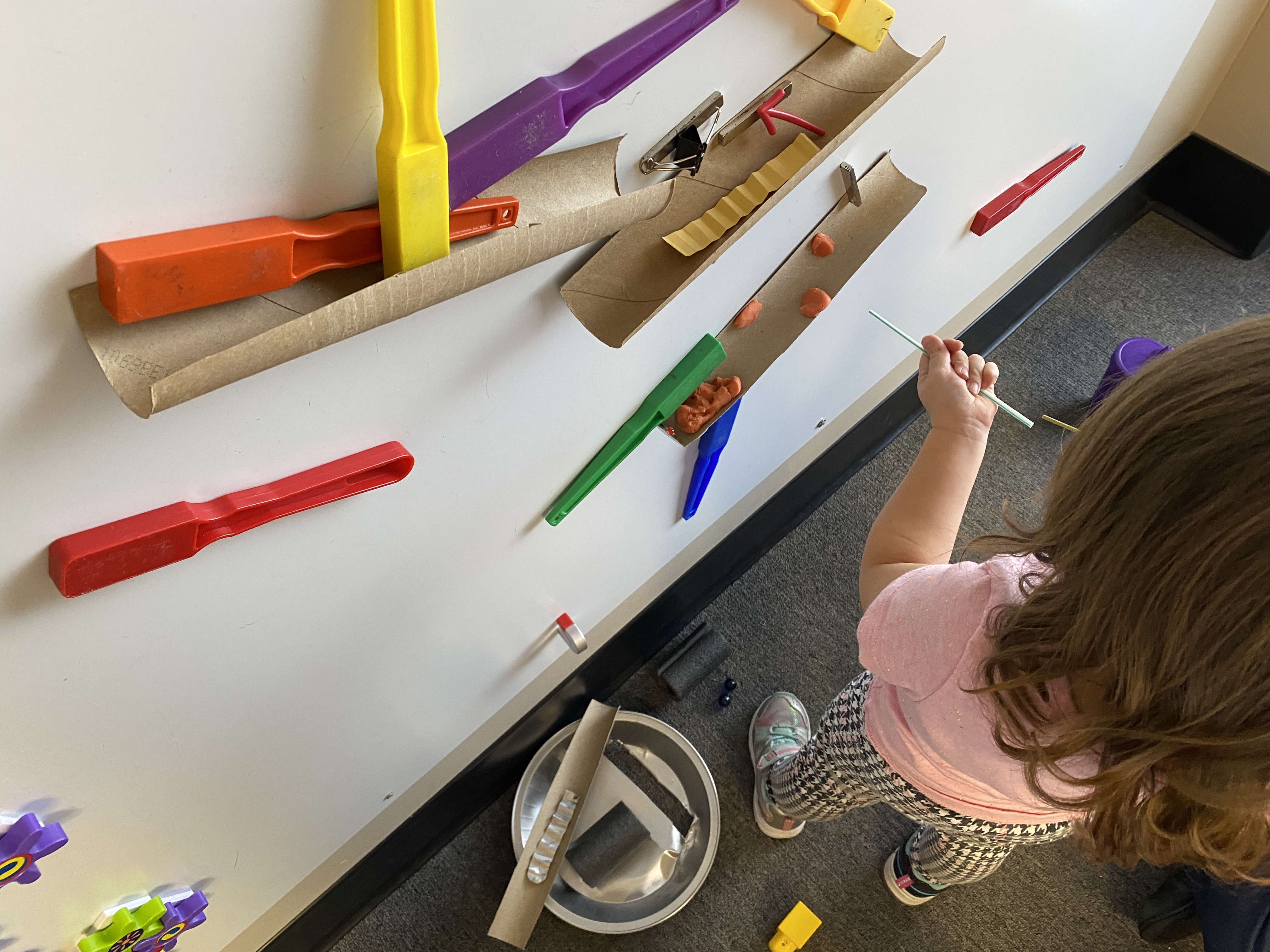the early years
Preschoolers “On the Move” with Energy
As children run, skip, hop, and jump from one playground structure to the next, we often look on with longing, wishing we too possessed that same boundless energy. Energy is used to do work (the physics term), including even the simplest of tasks of getting out of bed, walking up and down stairs, standing or sitting, and even lifting a finger. Energy is after all, the capacity for doing work that includes the movement of an object (of a given mass) through the application of force. In addition to motion, young children have daily experiences with energy in the forms of light, heat, and sound. Energy travels from place to place, object to object, or from system to system.
In his 2015 article, “How Should We Label Different Kinds of Energy?” Bill Robertson challenged the practice of labeling the types of energy experienced as misleading and confusing to learners and teachers alike. Using the example of an inflated balloon, he explained that when let go, a balloon’s elastic energy shows up as motion energy with the escaping air molecules. As the balloon flies around, it makes sounds that also results from motion energy of air molecules. His recommendation was to help learners keep track of energy by stating which objects or systems have energy and then discussing the transfer of energy between objects or systems that take place.
Young children can also develop a practical understanding of energy as they readily recognize and experience when an item gets warmer (e.g., a mug filled with hot chocolate), an object moves (such as a ball rolling), or something makes a sound (like a wind chime). Focusing on where the energy goes and how we know there has been a transfer of energy, according to Robertson, is far more fundamental to comprehending and appreciating the role of energy (the capacity to do work) than directing children’s attempts to properly “label” types of energy. Energy is either kinetic or potential and therefore, designing explorations and investigations that enable children to directly experience both forms are most critical.
Infants and toddlers can explore potential and kinetic energy using large balls and plastic tubes (Geiken 2011; Van Meeteren and Peterson 2022), also referred to as “Chutes and Silos.” As children tilt or prop the tubes, creating a slope, they observe and experience the ball and tube’s greatest potential energy as they insert each ball at the top of the tube and then witness the kinetic energy as each ball rolls through the tube, exits, and in some instances, continues rolling along the floor.
Exploring Energy with Marbles and Tubes
Laura Weilert, the Founder of That Science Fairy, provides STEM explorations and investigations with children ages 2–8. Working with home daycare programs, early childhood centers, and schools, she designs and implements a variety of hands-on activities using familiar low-cost materials to support and advance children’s scientific thinking and reasoning.
Materials
- 4 halves of paper towel rolls cut lengthwise by adult
- 4 inch sections of plumbing foam insulation tubing to connect pathways (3)
- Accordion fold ½ inch cardstock to make a bumpy insert (taped)
- Circular loose parts smaller than 1 inch diameter (pom poms, other marbles, brads poked through cardboard)
- Single height and width Mega Block™ drilled across top knob with dowel or straw through
- Bulletin boards, peg boards, or outdoor fences
- Tools, blocks, and adhesives to attach together
As preschoolers apply their practical scientific knowledge and reasoning about potential energy and forms of work, they can actively:
- Connect bisected paper towel rolls in a pathway that has obstacles which do the work of sound making, signaling, and flipping.
- Construct supports using cardboard boxes, wooden blocks, foam blocks, and sponges to construct tubing slopes, curves, and pathways; use adhesive material such as masking, electrical, painters’, or utility tape as needed.
- Figure out how to adhere tubing to bulletin boards, peg boards, or outdoor fencing using hooks to support the tubing pathways.
- Tinker with fine adjustments to complete the pathway, achieving the successful work done by the marble rolling through the obstacles.
Online Resources
That Science Fairy: https://thatsciencefairy.com/about
Acknowledgment
Thank you to Laura Weilert, That Science Fairy, for graciously sharing photos and inspiring children’s STEM learning experiences around potential and kinetic energy and motion.
Shelly Lynn Counsell (shellysapple@gmail.com) is a retired professor of early childhood education, an early STEM consultant, and coauthor of Drawing Out Learning with Thinking Maps: A Guide to Teaching and Assessment in PreK–2.
Instructional Materials Physical Science Teaching Strategies Early Childhood



